Sign up for The Wild
We’ll help you find the best places to hike, bike and run, as well as the perfect silent spots for meditation and yoga.
You may occasionally receive promotional content from the Los Angeles Times.
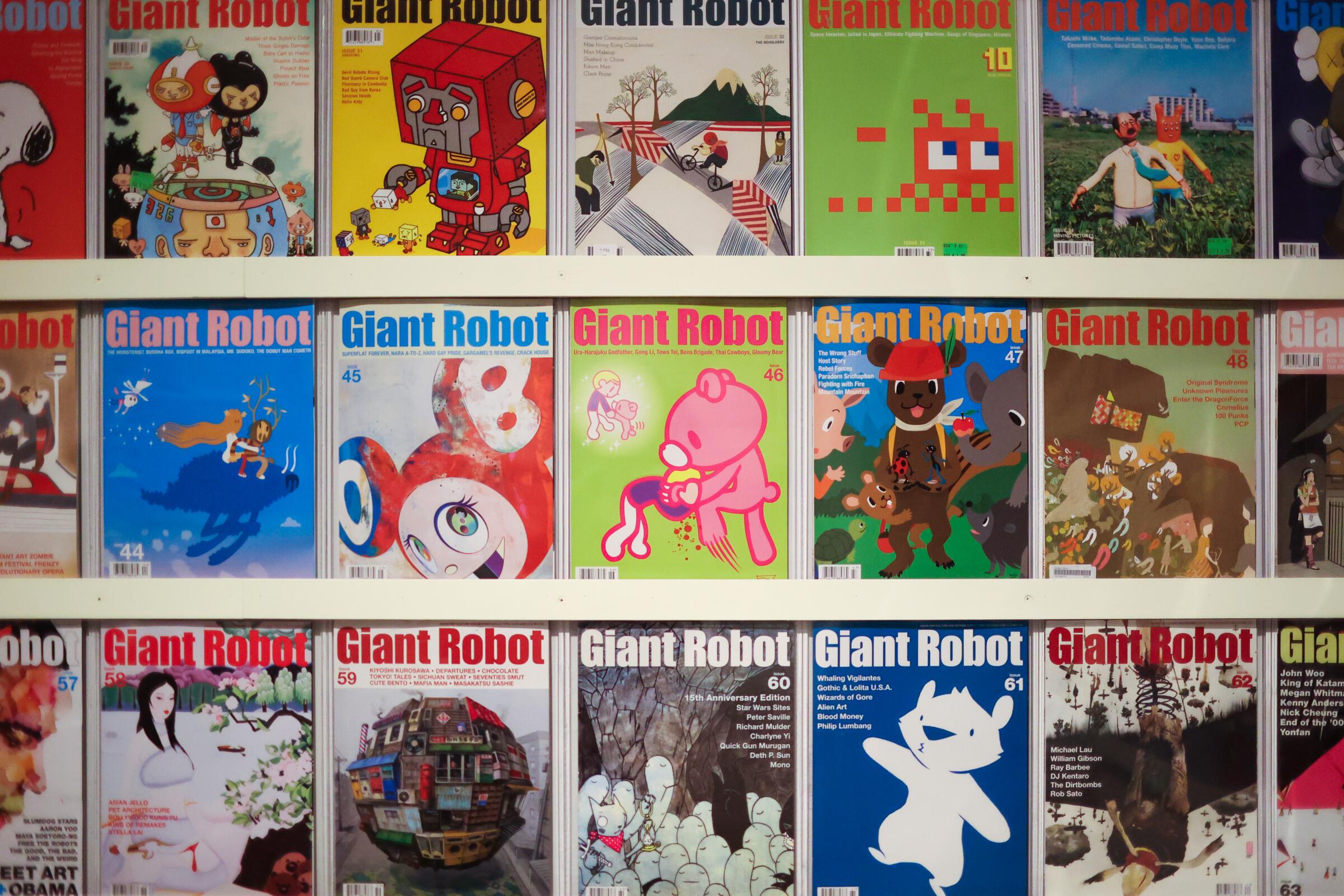
In 1994, Eric Nakamura launched a zine he dubbed Giant Robot, a photocopied, hand-stapled fanboy’s ode to manga, anime, Japanese punk bands and skateboarding. Thirty years later, what started as the personal hobby of a self-proclaimed outcast has transformed into a bastion of pop culture centering Asian American and Asian artists.
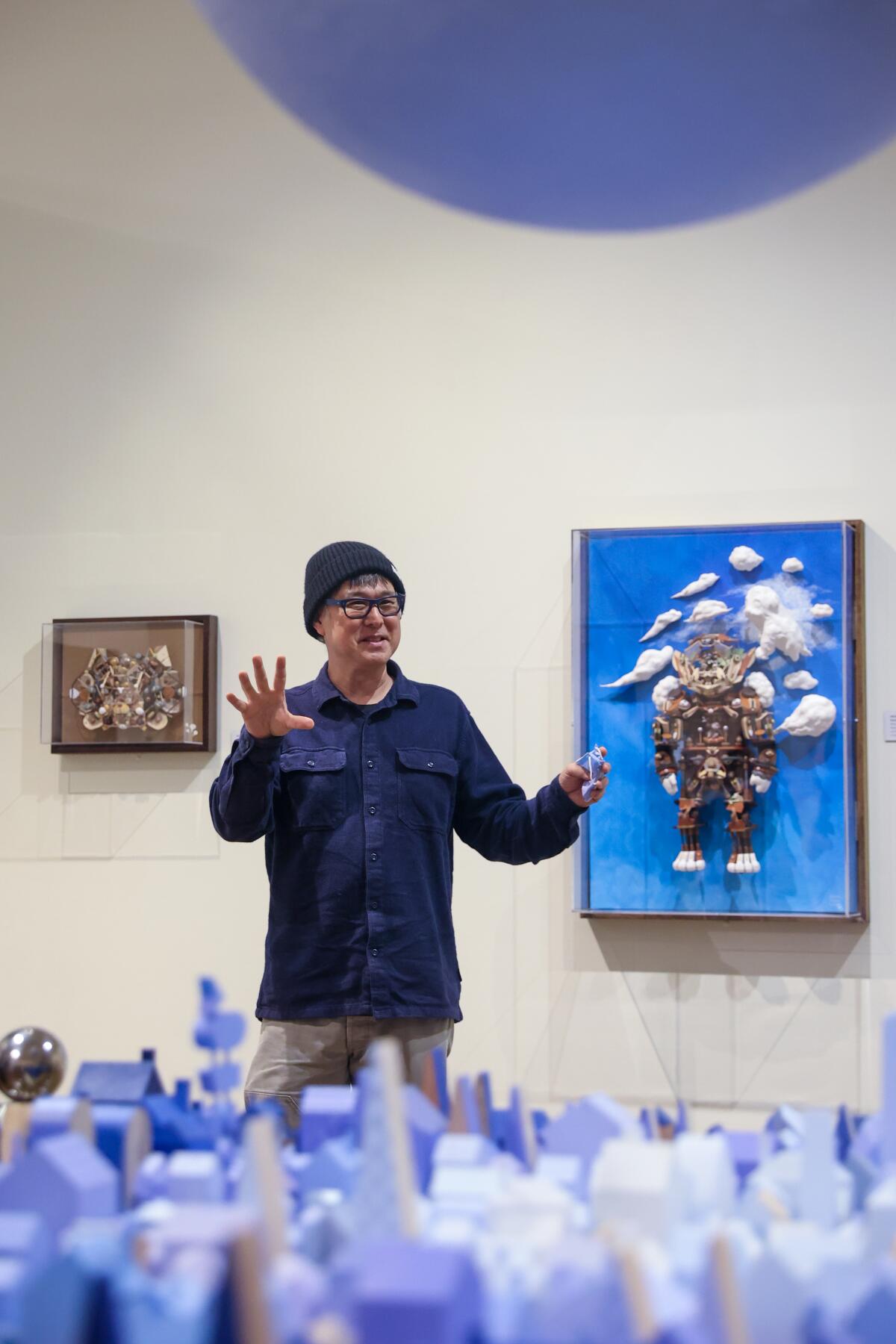
With ‚ÄúGiant Robot Biennale 5,‚ÄĚ on view at the Japanese American National Museum through Sept. 1, the West L.A. native flashes back to his scrappy DIY days and showcases creatives who‚Äôve been a part of his art ecosystem from the past to present day.
The group show features ceramicist Taylor Lee’s figures inspired by vintage Japanese sci-fi films, as well as Luke Chueh’s signature brooding bear paintings and a graffiti-inflected installation by Mike Shinoda of Linkin Park fame.
‚ÄúI was like, ‚ÄėOK, the art has to echo this 30-year journey,‚Äô‚ÄĚ Nakamura said of curating the exhibition, which ranges from multimedia works by longtime collaborator James Jean to small-yet-mighty watercolor pieces by emerging artist Rain Szeto.
Surviving multiple eras of ups and downs, DTLA remains a neighborhood in constant transformation ‚ÄĒ and a place that never stops dreaming.
‚ÄúI used to hate looking back. I was always like, ‚ÄėWhat I‚Äôm doing now is most important.‚Äô But for the first time, I went through all the archives, all the photos in tubs and tubs of one-hour photo envelopes, and started to organize. And I think that was just a good kick in the butt to understand: How did I start again, exactly? I took a deep dive into it by doing this exhibition.‚ÄĚ
When the biennale opened March 1, more than 1,000 fans endured a labyrinthine line to glimpse the paper scraps, scissors and glue sticks used to make the very first zine. They scrutinized a collage of candid photos trying to ID the stars that orbited around Giant Robot in the late ‚Äô90s and early ‚Äô00s ‚ÄĒ from comedian Margaret Cho to rocker Karen O. And they posed for selfies in front of a wall covered with issues of Giant Robot magazine, the now-defunct full-color glossy that evolved from the zine and featured cover art by the likes of Takashi Murakami and Yoshitomo Nara. (The cult favorite bimonthly magazine, which Nakamura edited with friend and former colleague Martin Wong, folded in 2010 after 68 issues.)
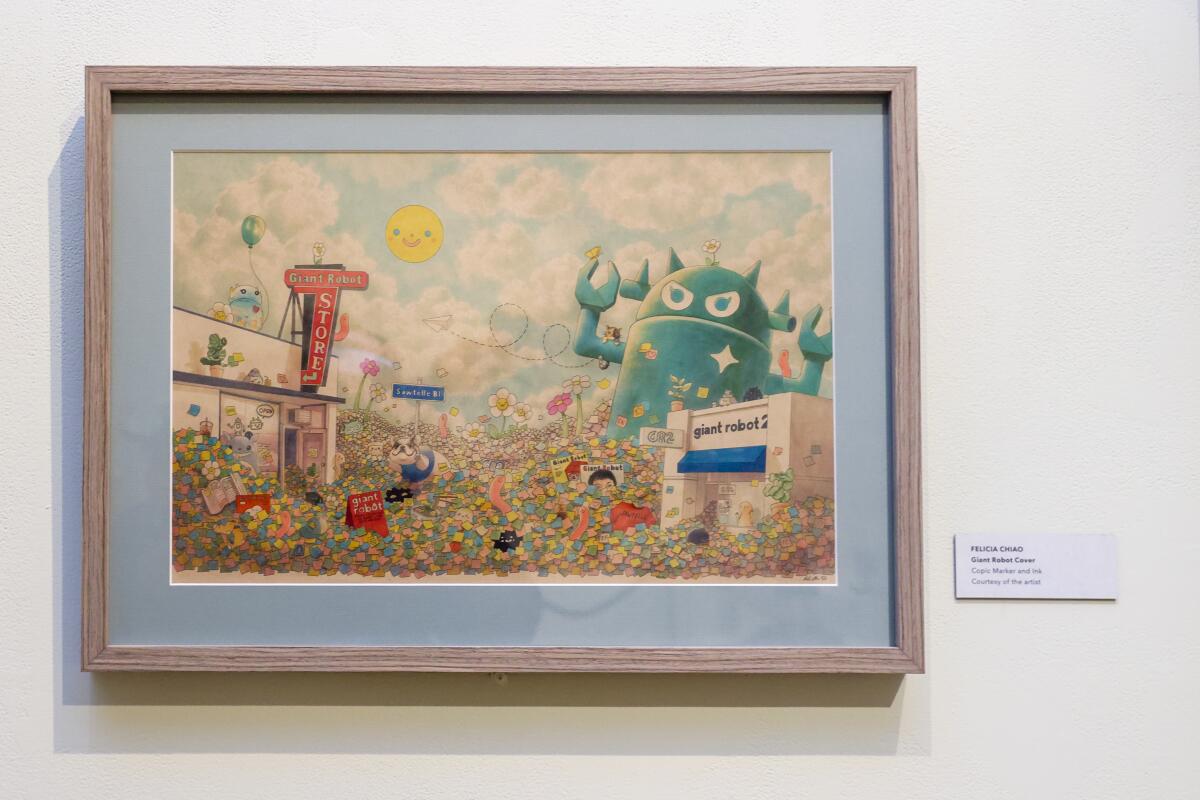
In the other gallery rooms, guests eagerly awaited their turn to interact with artists who started as Giant Robot fans and ultimately launched their careers by showing at Nakamura’s retail store and neighboring art gallery, GR2, on Japantown’s Sawtelle Boulevard.
Felicia Chiao, the San Francisco-based illustrator behind the biennale‚Äôs bubbly, fantastical promotional art, credits Giant Robot with being her entry into the art world: ‚ÄúIn 2020, [Eric] gave me my first solo show ever. I wasn‚Äôt familiar with how galleries worked and I had no community at the time.‚ÄĚ
One of her contributions to the show is a charmingly chaotic depiction of the busy block of Sawtelle. Nakamura used that same image as the cover art for his forthcoming book, ‚ÄúGiant Robot: Thirty Years of Defining Asian-American Pop Culture,‚ÄĚ which drops in September.
‚ÄúIt‚Äôs super heartening to see AAPI [Asian American and Pacific Islander] artists thrive and succeed, and it shows others that it‚Äôs possible,‚ÄĚ Chiao said. ‚ÄúNo matter where my career goes, I think I can always come back for a sense of community and belonging.‚ÄĚ
Biennale participants used the words ‚Äúcommunity‚ÄĚ and ‚Äúfamily‚ÄĚ when discussing their working relationships with Giant Robot. In fact, Yoskay Yamamoto, whose serene papier-m√Ęch√© and wood installation ‚ÄúMoonage Daydream‚ÄĚ sits at the exhibition‚Äôs center, said he met his wife at GR2 in 2017, proposed to her at the gallery five years later and enlisted Nakamura to officiate at their wedding last year.
Enter Downtown L.A.’s vortex of creative energy.
‚ÄúIn my mind, [GR2] is kind of like the Whisky a Go Go,‚ÄĚ said painter Darren Inouye, who along with wife Trisha makes up the L.A. creative duo Giorgiko. ‚ÄúIt‚Äôs a small location ‚ÄĒ if people didn‚Äôt know what to look for, they‚Äôd probably overlook it ‚ÄĒ but it has such a huge legacy. So many legendary artists have gone through their doors.‚ÄĚ
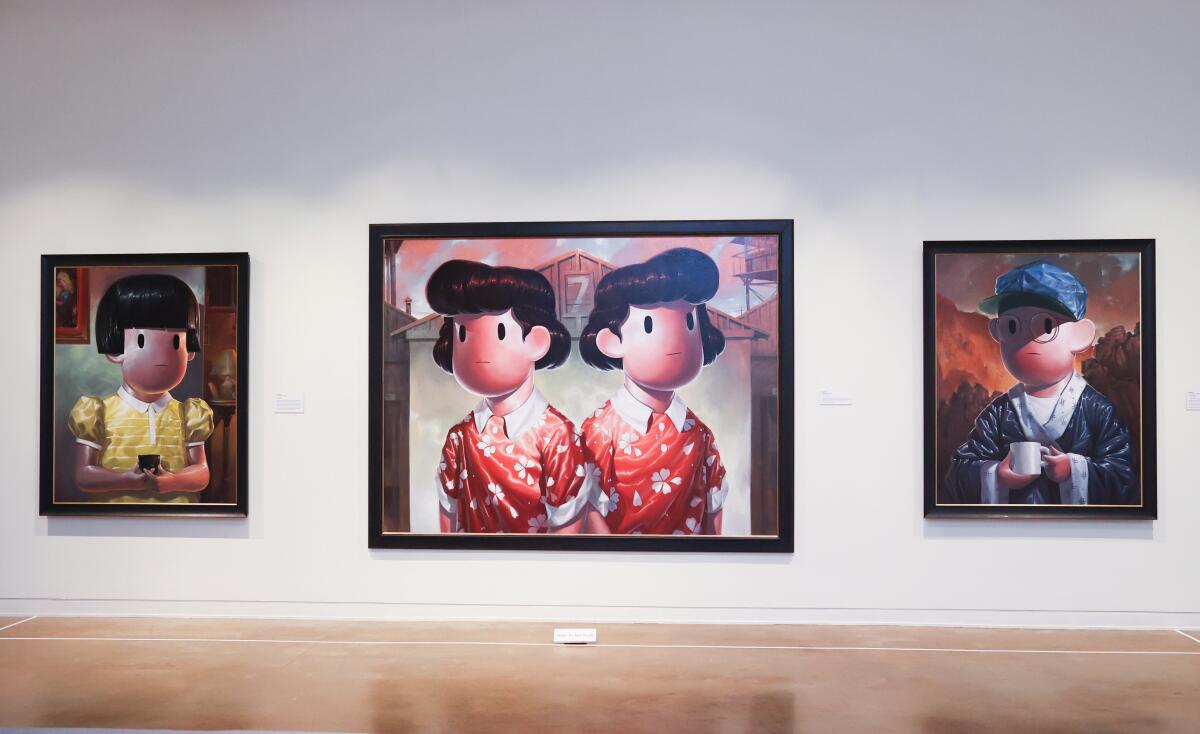
Giorgiko’s contributions to the biennale reference the incarceration of Japanese Americans during World War II and include two pieces honoring Inouye’s grandmother, who was interned at the Santa Anita Assembly Center at age 14.
‚ÄúI suppressed my Asian side very heavily growing up,‚ÄĚ Inouye said. ‚ÄúI just wanted to be as ‚Äėnormal‚Äô as possible. With Eric and Giant Robot, there was an element of a healthy amount of pride ‚ÄĒ not sweeping under the rug our ethnicity and history, but actually being able to highlight it.‚ÄĚ
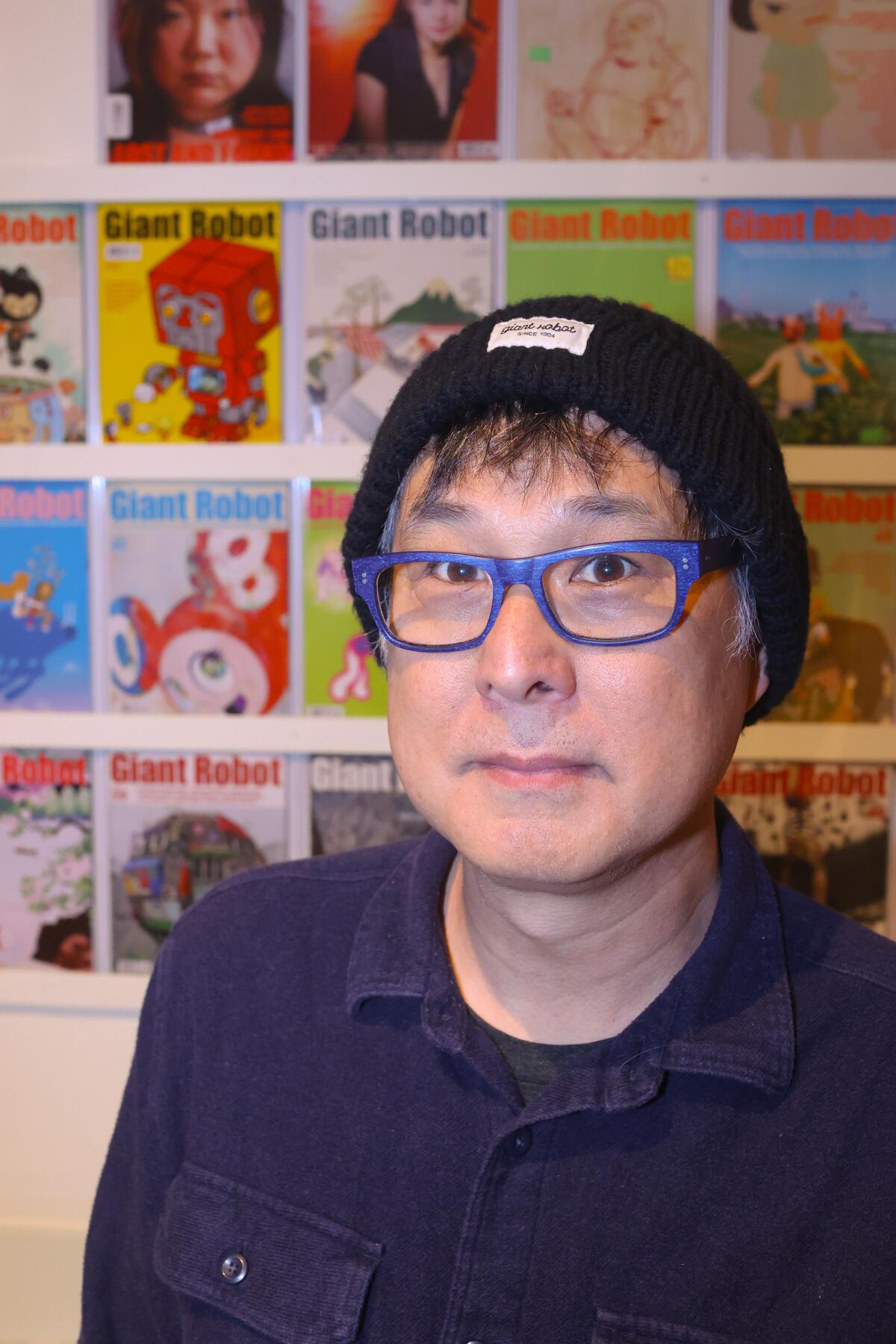
Back in the early ‚Äė90s, that was Nakamura‚Äôs mission ‚ÄĒ to reach other young Asian American ‚Äúunderdogs‚ÄĚ who shared his interests but didn‚Äôt see themselves represented anywhere in print.
‚ÄúIf you look at the very first [zine] issues, identity is a big deal,‚ÄĚ Nakamura said. He added that though there were other Asian American students when he attended UCLA in the early ‚Äė90s, ‚ÄúI still felt like an outcast there because I was into punk rock and had long hair ‚Ķ and maybe could have showered a little more.‚ÄĚ
(Bringing things full circle, later this year, he’ll return to his alma mater to curate a multi-night film and television screening series celebrating Asian and Asian American artists at the Hammer Museum’s Billy Wilder Theater.)
Norton Simon Museum. Skirball Cultural Center. Craft Contemporary. Autry Museum of the American West. Many of L.A.’s best cultural institutions can be experienced for free.
‚ÄúCreating a scene is really where it all comes from.‚ÄĚ
The museum will host a series of workshops and events tied to ‚ÄúGiant Robot Biennale 5,‚ÄĚ with some of the exhibit‚Äôs artists setting up shop to show you how to make GR2-worthy creations of your own. (For full event info, visit the Japanese American National Museum website.) Here are some upcoming events ‚ÄĒ along with recommendations from some of the artists to get the most out of your Little Tokyo visit.
Collaborative Art Making With Giorgiko
7 to 9 p.m. April 11
$10, free for museum members; ages 21+
In this workshop, Giorgiko‚Äôs Darren and Trisha Inouye will lead an exercise where one guest starts a drawing, then passes it along to the next person to work on. ‚ÄúThere‚Äôs so much letting go with collaboration, and we wanted to tap into that,‚ÄĚ Trisha says. ‚ÄúThe idea is people have to let go and wrestle with unexpected things they see in the art that was theirs and is now ours.‚ÄĚ
If you go ‚Ķ Darren has a tip for the style-savvy: ‚ÄúI highly encourage people who want something they can only get in Little Tokyo to go to the clothing store Japangeles. They make really cool streetwear that definitely has a Japanese American, Los Angeles vibe which is pretty unique.‚ÄĚ He says the brand‚Äôs in-person-only shopping experience is intended to encourage shoppers to explore the sights, sounds and shops of Japanese Village Plaza.
Whether you want to try candle making, Jaipur block printing, glass blowing, neon bending or woodworking, L.A. has a space for that.
Giant Robot x JANM Art Konbini
11 a.m. to 5 p.m. May 25
Entry included with museum admission ($16 adults, $9 seniors/students/youth, free for members)
In Japan, a konbini is an all-purpose shop where you can pick up a little bit of everything. At this artsy homage to those convenience stores, you can shop prints, zines and crafts made by local artisans, including biennale artists Sean Chao and Luke Chueh, as well as woodworker Erick Martinez, ceramicist Lucas Pincer-Flynn and illustrator Kelly Yamagishi.
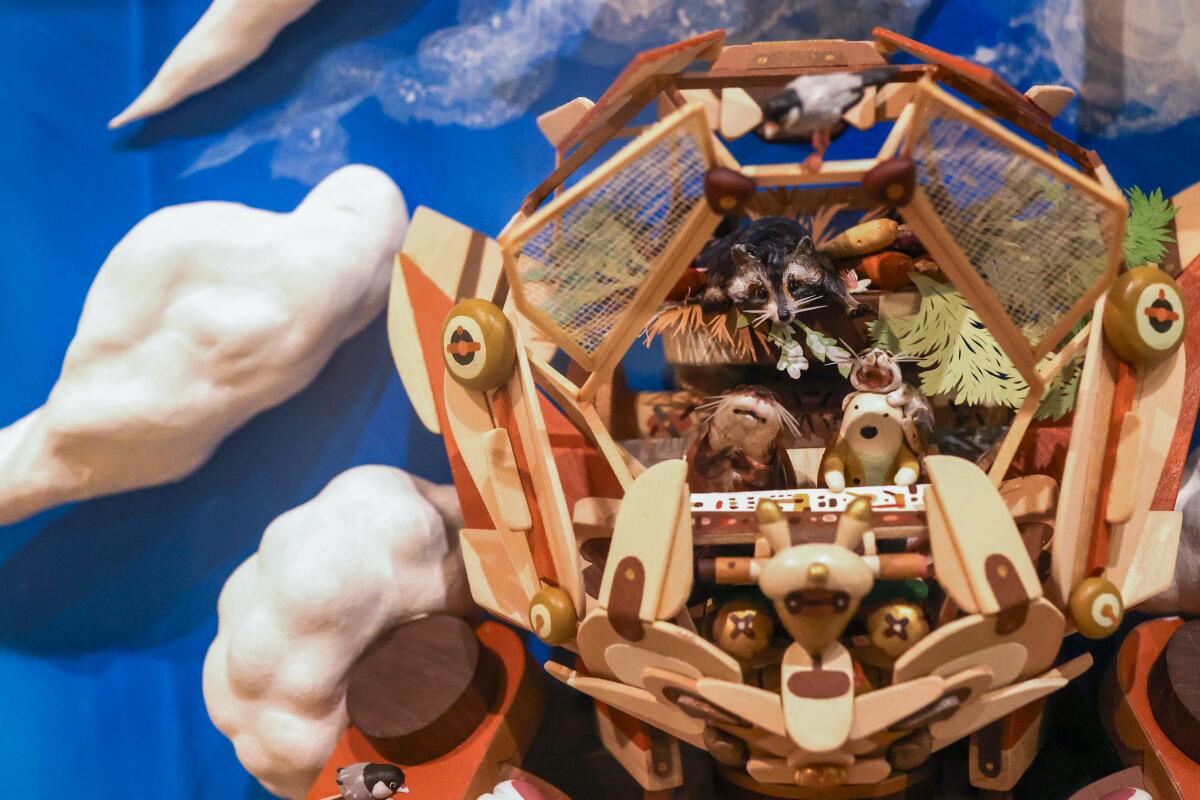
Plant Buddy Workshop With Sean Chao
1 to 4 p.m. June 15
$21 adults, $14 seniors/students/youth, $5 members (includes museum admission)
Seats are limited; RSVP is required. Reservations open about a month prior.
Chao is a master of miniature sculpture. His intricate biennale dioramas depict playful nature scenes filled with frolicking wildlife as well as his own riff on a giant robot. In his workshop, he’ll guide participants through making small clay plant buddies to adorn their favorite potted houseplants.
From tiny storefronts to longtime family-run institutions, we curated this list of our favorite places to shop for houseplants in and around L.A.
If you go ‚Ķ From its inception, Giant Robot has championed Asian cuisine ‚ÄĒ from magazine articles about ramen and boba (before they were trendy Stateside) to Nakamura‚Äôs mother supplying GR2 opening parties with her handmade sushi and snacks. With this in mind, Chao recommends grabbing mochi at the long-standing confectionery Fugetsu-do and fluffy Japanese white bread at Okayama Kobo Bakery. ‚ÄúBoth items tend to sell out very quickly,‚ÄĚ he warns. If you‚Äôre not an early bird, or you‚Äôd prefer a full meal, he recommends Kouraku: ‚ÄúIt‚Äôs a classic restaurant that serves the best tenshin chahan ankake [shrimp omelet on pork fried rice with gravy] around.‚ÄĚ
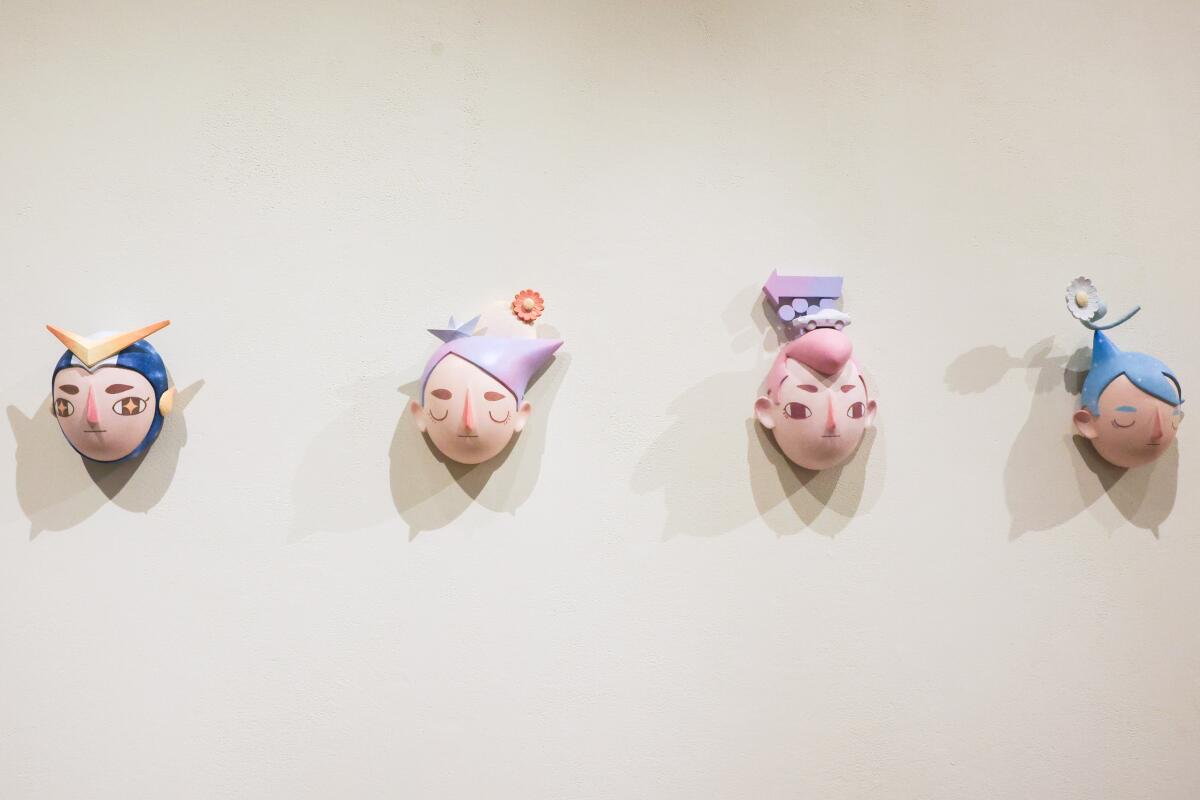
Artists Workshop With Yoskay Yamamoto
1 to 4 p.m. May 11
$21 adults, $14 seniors/students/youth, $5 members (includes museum admission)
Seats are limited; RSVP is required. Reservations open about a month prior.
Yamamoto is all about taking a sustainable approach to creating art, working primarily with salvaged wood, found paper and thrift store objects. He’ll be using upcycled materials to help participants build and paint small houses to take home in the spirit of traditional Japanese omiyage (a meaningful token or souvenir).
If you go … His neighborhood pick is Anzen Hardware, where you can buy hard-to-find Japanese tools and home goods for construction projects big and small.
Sign up for The Wild
We’ll help you find the best places to hike, bike and run, as well as the perfect silent spots for meditation and yoga.
You may occasionally receive promotional content from the Los Angeles Times.